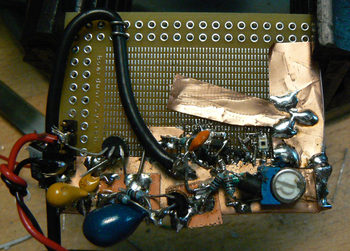Viewing posts for the category SED
For RF folks, one of the perennial quests is for better frequency mixers: lower distortion,
lower power, better spurious performance. FETs can help. Nowadays CMOS muxes are the devices of choice for HF mixers, but to get the best performance, you still have to know how they work. Ed Oxner was a long-time Siliconix apps guy, and his paper on High dynamic range FET RF mixers is still right up there with the best.
(From a Siliconix databook, 1985.) The FET mux approach is often credited to Dan Tayloe, but since they work just the same, the "Tayloe mixer" should really be called the "Oxner mixer".
Erroll Dietz is a remarkable fellow. He started out at National Semiconductor as Bob Pease's
technician, and rose to become Chief Technology Officer.
Sometimes it's useful to add supporting documents, schematics, scope photos, simulations or other things to Usenet posts. By popular request I've added links to some of these, in no particular order.
One of the nice things about sci.electronics.design is that it's widely redistributed by archive sites, some of which you can also use for posting, which is good since Google Groups no longer links to Usenet.
Some examples:
electronics-related

This is pretty small, because it has to be--those are microwave transistors, and will oscillate at the slightest provocation. The axial resistors and TO-92 parts are all for biasing---the actual amplifier is the part between the output coupling cap (the small orange thing in the middle) and the photodiode, which is the white square with the black middle at the right.